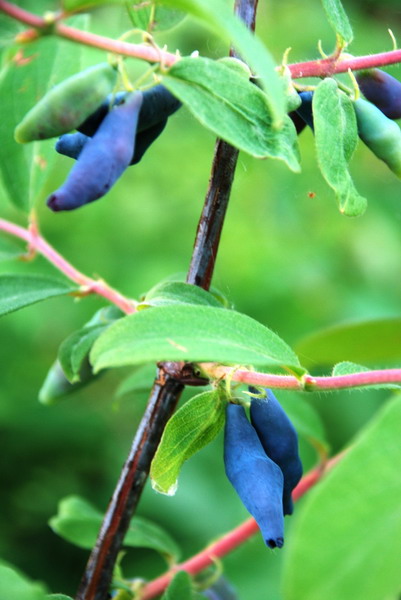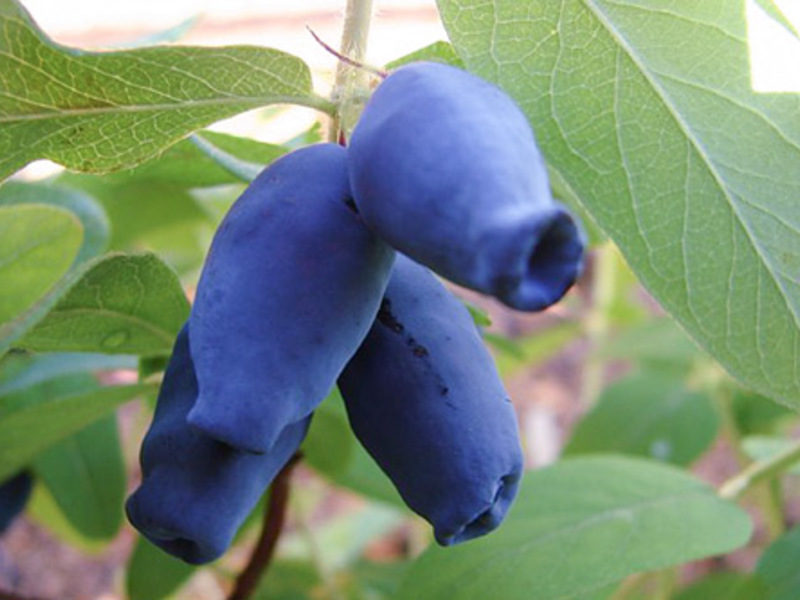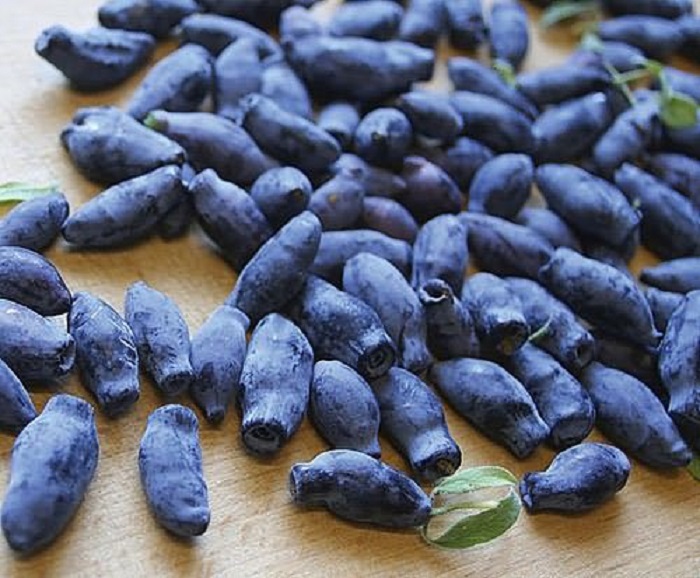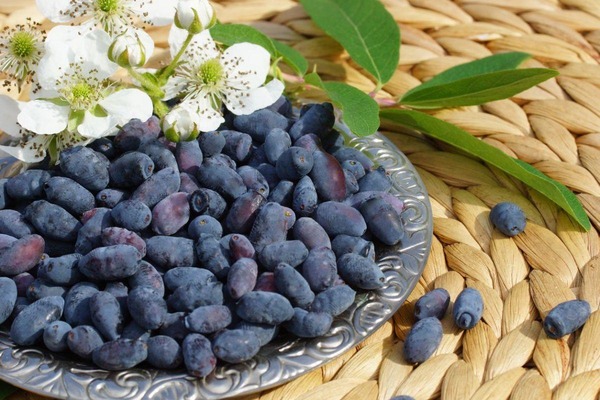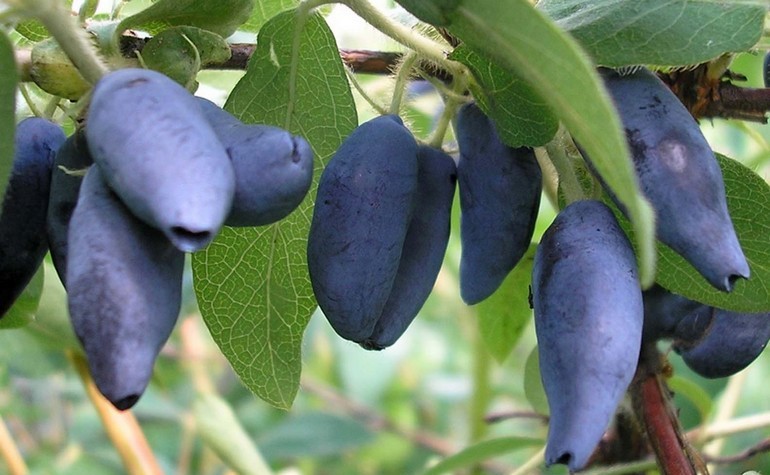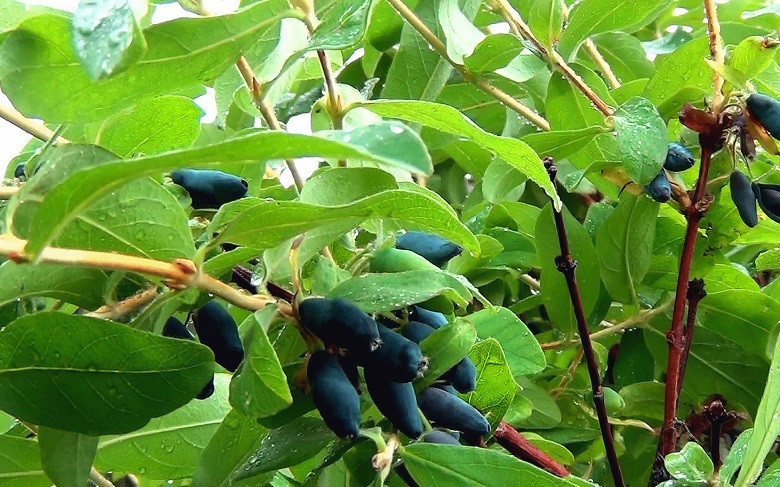Content:
Honeysuckle Blue Spindle has been bred by breeders. The berry is recommended for cultivation in all latitudes of Russia. The plant is adapted to heat and frost, does not require special care. The article discusses a description of the variety, step-by-step instructions for growing, how to choose a seedling for planting, rules of care, pros and cons.
The history of the creation of the variety
In 1980, the breeders of the Siberian Research Institute of Horticulture: Zholobova, Archer, Kalinina, bred a new edible honeysuckle variety, which was named the Blue Spindle. This is an early and frost-resistant Kamchatka honeysuckle.
Distinctive features of the seedling from free pollination are small bushes and high productivity. The variety gets its name from the color and shape of the berries. Honeysuckle Blue Spindle has been tested on Siberian sites. The selected plant has been included in the State Register for the Russian Federation since 1989.
Description of the variety: features and characteristics
Honeysuckle Blue Spindle is a fast growing and high yielding variety. Up to 2.5 kg of berries are obtained from one bush per season. The bushes are drought-resistant and frost-resistant, adapted for growing in regions with a sharply continental climate. They are rarely exposed to diseases and various pests.
Characteristics of the variety:
- Bushes with a sparse rounded crown, vigorous, reaching up to 1 m in height. The branches grow upward at an angle. The leaves are large, dark green, oblong-oval in shape;
- Flowers tolerate spring frosts well;
- The color of the berries is blue or bluish with a waxy bloom of fusiform shape with a dense skin. Regardless of the region of cultivation of the plant, the berries ripen large - 1 cm in diameter, 2.7 cm long;
- The pulp is sweet and sour in taste. In severe drought, the taste may be slightly bitter. The berry contains: pectin, vitamins C and P, acids, sugars, dry substances;
- The variety belongs to the early maturing. The berries begin to ripen from mid-June. Ripe berries crumble easily (up to 15% of the yield), so it is recommended to pick ripe berries immediately;
- A variety of honeysuckle is self-infertile. The pollinator of bushes can be any sort of Kamchatka honeysuckle (Blue Bird, Azure, Cinderella).
Description of the Honeysuckle Variety The Blue Spindle gives an overview of the plant. Simple rules of cultivation and care will allow gardeners to see all the benefits: resistance to sun, drought, cold, high-quality and large annual yield.
Growing Honeysuckle Blue Spindle
If you know and follow the basic rules when choosing cuttings, planting, and technology for caring for bushes, then gardeners will get a good harvest of delicious berries every season.
The shrub can bear fruit for more than 20 years, with the right place for planting seedlings. The plant will actively develop in a sunny area. Young cuttings should be planted in mid-October, before the onset of frost. The plant can withstand up to -45 degrees.
Spring planting is undesirable for honeysuckle, since the variety is early maturing, begins to bud early. It takes a lot of energy for the leaves, flowers and shoots to develop. The planted stalk spends energy on rooting.When planting in spring, there is a risk that the plant will not have time to take root, get sick and die.
Ripe berries are prone to shedding, so it is better to choose a place protected from the wind. Gusts of wind can damage honeysuckle buds. At a depth of 1-1.5 m, there should be no accumulation of groundwater.
How to prepare a site
The Blue Spindle variety is unpretentious to the soil. Soils are favorable:
- Loamy;
- Sandy loam loose drained soils.
It is desirable that the soil has a low acidity level. With increased acidity, lime is added to the soil at the rate of 0.5 kg per 1 square meter. It is recommended to fertilize depleted soil in advance with rotted manure at the rate of 5 kg per 1 square meter.
An important part of growing a plant is choosing which seedlings to plant. Tips for choosing viable cuttings:
- Young seedlings should be grown in special garden nurseries;
- There is no need to buy bushes higher than 1.5 m in height - they do not adapt well to a new place, they may not take root;
- A small seedling, 25 cm in size, is also not recommended to purchase. Young cuttings should be 2 years old;
- Before buying, the bush is carefully examined. If there is damage, then they should not be strong. 2-3 broken shoots and roots are allowed. When planting a seedling, they must be removed;
- Saplings with open roots are planted immediately after purchase in the autumn, before the onset of frost. If the cutting is bought in a flowerpot, then it can be planted in the spring.
Step-by-step landing instructions
The Blue Spindle variety is pollinated by other types of honeysuckle. Therefore, 2-3 cuttings of other honeysuckle are planted nearby, which are suitable for cross-pollination. In order for young cuttings to take root immediately, it is important to know how to plant them.
Landing is done in several steps:
- Dig a 40x40x40 hole;
- Prepare fertilizer and plant nutrition. Pour wood ash (300 g), potassium sulfate (30 g), superphosphate (100 g), humus or compost (5 kg) into a large bucket. Mix everything thoroughly, pour into a hole;
- The roots should fit freely into the hole. If it is small for a seedling, then increase the volume of the fossa;
- When planting, the root collar of the cutting is deepened by 5-7 cm. The lower part of the shoots should remain underground;
- When planting a seedling with open roots, it is important to ensure that the roots "comfortably" fit into the hole. All roots are neatly straightened;
- If the seedling was in a pot, then it is watered, taken out along with a lump of earth and planted in the middle of the hole;
- The hole is covered by half and watered with water;
- Cover the remaining empty space with earth, compact the soil around the hole with your hands. Pour water over the well;
- Mulch the soil with sawdust. The mulch is laid out in a small layer to retain moisture.
How to care for honeysuckle
The Blue Spindle variety does not require constant watering. The plant is drought-resistant. If it rains, then the bushes do not need to be watered additionally until the ground dries out.
In hot weather, without rain, watering should be done regularly once every 10 days. Pour 10-15 liters of water under each bush. With sufficient moisture, honeysuckle berries ripen large, less bitter.
You cannot loosen the holes! When loosening, there is a risk of touching the surface roots and damaging them. So that a crust and cracks do not form on the ground, the holes are sprinkled with sawdust, hay or straw. If the ground has hardened, then you can make several punctures with a pitchfork, after which a mulching procedure is necessary.
Overgrown bushes are not dense. The variety does not really like pruning, but it should be carried out periodically. By pruning young cuttings, you can lose a good harvest. There is no need to do the procedure for the first three years. Then the oldest branches are pruned. To distinguish old branches from young ones, it is necessary to consider the bark: it is darker than that of young ones, and begins to crack.
It is recommended to carry out thinning every season. Branches that grow crookedly or down to the ground are carefully removed; berries do not ripen on such branches.In the process of pruning, the main task is to give the bush a neat appearance, remove damaged and unnecessary branches.
A perennial fruiting crop requires periodic feeding. Fertilization tips:
- In the spring, when the snow has melted, half a bucket of humus is poured under each hole. The same procedure is carried out in late autumn, after the foliage has fallen;
- When the bushes begin to bloom, each hole is powdered with a glass of ash, then mulching is done;
- At the end of September, in the middle of the hole, make a circular depression (20 cm) and evenly distribute 1 tbsp. a spoonful of superphosphate. Water the furrow, cover it with earth.
Advantages and disadvantages of the variety
The variety can be grown in almost all regions of Russia. A variety of honeysuckle, Blue Spindle, has established itself as a plant adapted to various weather conditions. The bushes easily survive hot summers and frosty winters.
Gardeners note the advantages of the plant:
- Small compact bushes;
- Early ripening of berries;
- High annual harvest;
- Drought-resistant and frost-resistant variety;
- Large berries with a high vitamin content;
- Unpretentious plant, does not require special care and frequent watering;
- The variety rarely gets sick and is affected by pests.
The disadvantages include the strong crumbling of berries during the ripening period. The berries ripen gradually, so they must be picked every two days. Berries can fall even during the assembly process, when the branches move.
On a note. If you put an old tulle or any other light-colored fabric on the ground before picking berries, then the crumbling berries can be easily and quickly collected, while they will remain whole and clean.
Honeysuckle Blue Spindle will delight for many years with its harvest. Growing and caring for every gardener.
